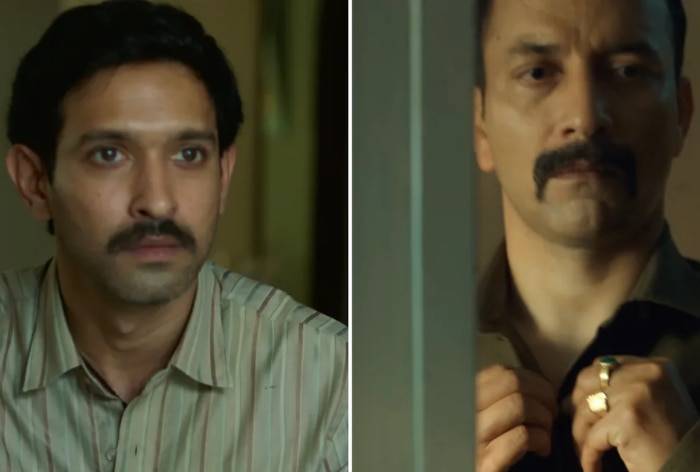It’s a film that takes inspiration from the infamous Nithari Killings—a chilling case involving pedophilia, rape, and murder. The film attempts to weave these dark themes with the backdrop of political intrigue in a police investigation. Let’s look at it from the perspective of a cinema which is loosely based on reality.
Script is Disaster.
The script is based on the 2005-2006 serial murders of innocent children, regardless of their gender. The perpetrators were even involved in necrophilia, making it an undeniably grim narrative. However, the execution leaves much to be desired.The setting of the film juxtaposes Rajiv Colony—a slum for poor migrants—with Sector 36, an affluent area where nearly 150,000 people call home.
At the center of this dark tale is a small police station with three corrupt officers. Inspector Ram Charan Pandey, indifferent to the numerous missing child cases, is joined by two lieutenants who are even worse. The disappearance posters plastered on the streets merge into an overlooked cry for help, until one day, the inspector’s own daughter goes missing.This moment pushes Pandey to act, but his pursuit leads to a clash with Mr. Bassi, an influential business tycoon and childhood friend of the SSP.

Suspended for his defiance, Pandey remains off duty until a new SSP arrives and supports him in reopening the investigation. After battling various obstacles, Pandey finally zeroes in on the killer, Prem, whose twisted obsession with the TV show Sab Banenge Crorepati (SBC) drives his actions.
Certainly I’d prefer the documentry “The Karma Killings: India’s True Crime’s Watershed Moment”, which is readily available in YouTube over Netflix’s Sector 36. The former retelling has given us a nuanced perspective on both the perpetrators Surinder Koli and Maninder Singh Pandher’s deeds. However, Netflix’s presentation is more like a vague elaboration dealing with the political aspect. Even the process of investigation shown in the movie lacks intensity.
Netflix’s Cinematic Blunder
Despite the promising premise, Netflix’s Sector 36 falls short. While films are works of fiction, the disclaimer “based on a true story” cannot justify the lack of impact. The screenplay lacks vision, and though the runtime is just 2 hours, much more could have been achieved, particularly in the areas of chase sequences, interrogations, and uncovering the truth.The standout performances come from Vikrant Massey and Deepak Dobriyal.

Massey delivers his career-best as a pedophile and psycho killer, portraying a chilling array of emotional shifts with precision. His command over the character’s language, movement, and changing emotions is remarkable. Deepak Dobriyal shines as both narrator and actor, adding depth to his role. However, the portrayal of the victims’ families feels underwhelming and lacks emotional punch.
Fiction Far from Reality
While Netflix is usually known for its bold portrayals of gore and graphic content, Sector 36 misses the mark. The blood is there, but the violence isn’t shown with the expected brutality. Known for chopping off the limbs of his victims, the killer’s actions are hinted at but not fully depicted. Although the film carries a warning for graphic content, it doesn’t leave the audience with the impact it should. The rape scenes are handled with discomfort, leading to an unsatisfying resolution of whether to show or not. Consequently, the trauma that should grip the audience is missing.
What I Felt
Sector 36 is ultimately a missed opportunity, and although Vikrant Massey and Deepak Dobriyal carry the film with their stellar performances, the screenplay, pacing, and lack of graphic impact leave it wanting.Sector 36 offers a brief glimpse into the horrors of the Nithari Killings, but the overall execution leaves it as a forgettable entry in Netflix’s catalog. Fans of Massey’s work will appreciate his efforts, but the rest of the film fails to reach its potential.










